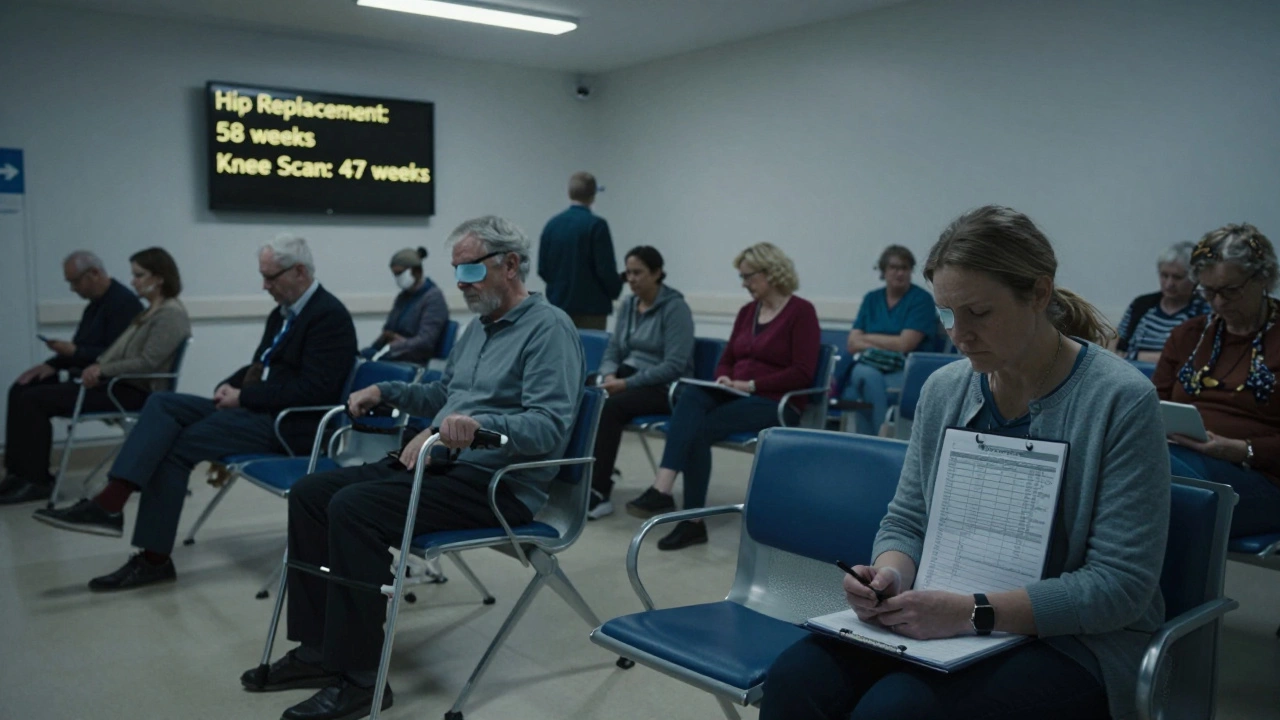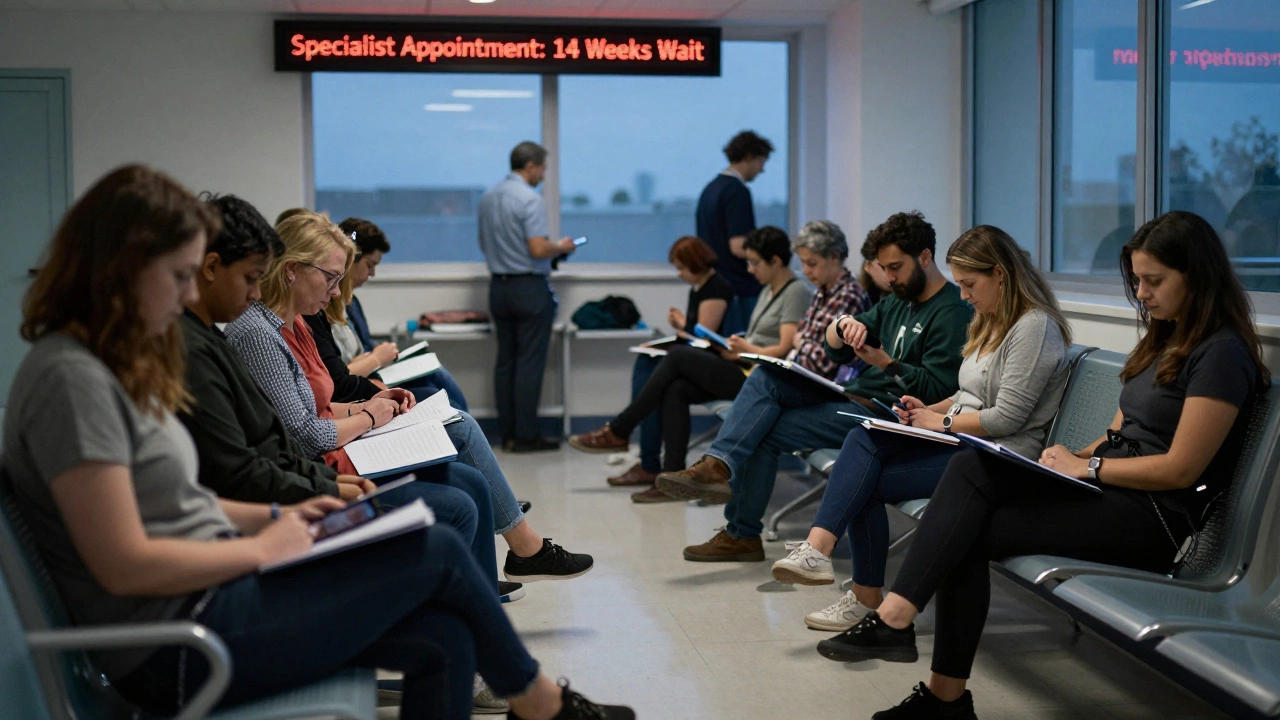NHS Waiting Times – Quick Guide and Tips
Ever wonder why you hear about NHS waiting lists all the time? You’re not alone. The NHS treats millions, and sometimes the system gets stretched. That stretch shows up as longer waits for appointments, scans, or surgery. Below you’ll get the straight‑forward facts and a few ideas to make the wait a bit easier.
Why the lists keep getting longer
First off, demand is higher than ever. An aging population means more chronic conditions, and new treatments keep adding to the mix. At the same time, staffing shortages make it harder to move patients through quickly. When a ward runs short on nurses or doctors, surgeries get postponed and the backlog grows.
Another big factor is the “hospital bottleneck.” A patient might be seen in the emergency department, but if there’s no free bed, they stay longer, and that blocks the next patient from getting in. That ripple effect can add weeks to the wait for non‑urgent care.
Lastly, funding limits mean hospitals can’t always expand capacity fast enough. Even though the government sets targets, the cash to meet them doesn’t always arrive on time.
Key targets you should know
The NHS has a set of waiting‑time targets that act like promises to patients. The most talked‑about one is the 2‑week rule for suspected cancer – you should see a specialist within 14 days of referral. Miss that, and the trust is flagged for review.
For routine elective surgery, the goal is to start treatment within 18 weeks from when the GP makes the referral. The 18‑week clock starts ticking the moment the GP sends the referral, not when you get your first appointment.
Emergency departments aim to see, treat, admit or discharge 95% of patients within four hours. If they miss that, it’s a sign the department is under pressure.
Knowing these numbers helps you understand whether a hospital is meeting standards or struggling. If a trust consistently falls short, you might consider asking for a referral to a different centre.
Now, what can you do while you wait? One practical step is to ask your GP about “alternative pathways.” Some clinics offer faster appointments for certain conditions if you’re willing to travel a short distance. Another tip is to stay on top of your referral status. A quick call to the waiting‑list team can confirm where you are on the clock.
If you have a condition that could get worse with delay, let your GP know. They can flag it as urgent and potentially move you up the list. For non‑urgent cases, self‑management tools – like physiotherapy apps or home monitoring – can keep you stable until you get seen.
In some cases, private care might be an option if the NHS wait is too long and you can afford it. It’s not the first choice for most, but it’s worth having on the radar.
Lastly, keep an eye on official NHS statistics. They publish monthly updates on waiting times by trust, so you can see which hospitals are meeting targets and which aren’t. That knowledge gives you leverage when you discuss options with your GP.
Bottom line: waiting times are a mix of demand, staffing, and funding. Understanding the key targets and staying proactive can shave days off your wait and reduce stress. Stay informed, ask questions, and use any alternative routes that suit your situation.
What Is the Longest NHS Waiting List in 2025?
In 2025, over 1.2 million people in England wait more than a year for elective NHS treatments like hip replacements and cataract surgery. This is the longest waiting list in NHS history-and it's getting worse.
How Long Is the Wait for NHS Healthcare? Real Numbers for 2025
In 2025, NHS waiting times are at record highs, with patients waiting months for routine care. Learn real wait times for GP visits, scans, surgery, and mental health - and what you can do while you wait.
NHS Waiting Lists: What You Need To Know in 2025
Explore why NHS waiting lists exist, what delays mean for treatment today, and practical advice to manage or avoid hospital backlogs. Find facts, stats, and real-life tips inside.
NHS Wait Times vs US: Which System Gets You Seen Faster?
Trying to figure out if the NHS or the US healthcare system is faster for getting treatment? This article breaks down how long you actually wait in both countries for different types of care. We’ll look at what’s driving the delays, how emergencies are handled, and smart ways to cut down your own wait time. You’ll get real numbers and tips to help you navigate both systems. Curious about who really waits longer for health care?
Understanding the NHS 2-Week Rule for Special Appointments
Ever found yourself wondering about the NHS's 2-week rule for waiting times? This guideline aims to ensure that patients suspected of having cancer get seen by a specialist within two weeks. But how does it work, and what should patients expect during this time? This article delves into these questions, providing clarity and essential tips for navigating the NHS wait times efficiently.
Key NHS Waiting Time Targets: What You Need to Know
Waiting time targets are crucial for ensuring timely access to healthcare in the NHS. These targets aim to reduce delays for patients needing treatment, from emergency care to planned surgeries. Understanding these benchmarks can help patients manage expectations and plan accordingly. In this article, we delve into the specifics of NHS waiting time targets and their significance for patient care.






